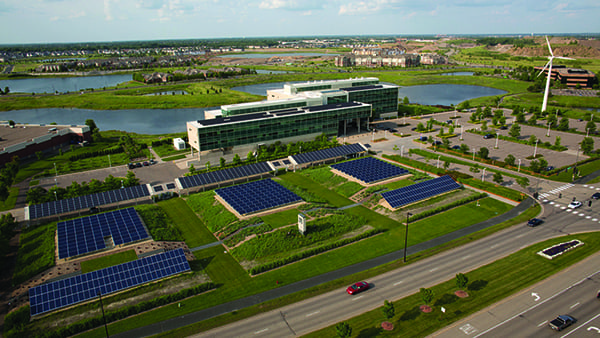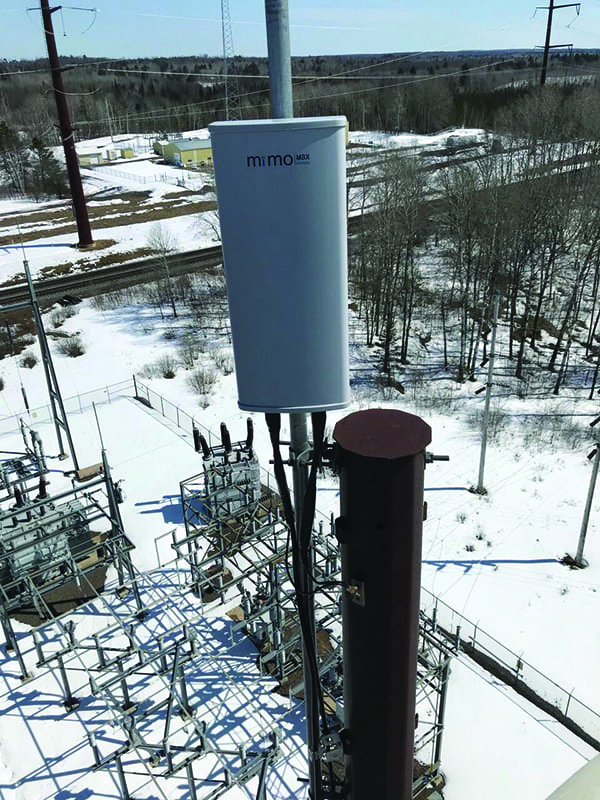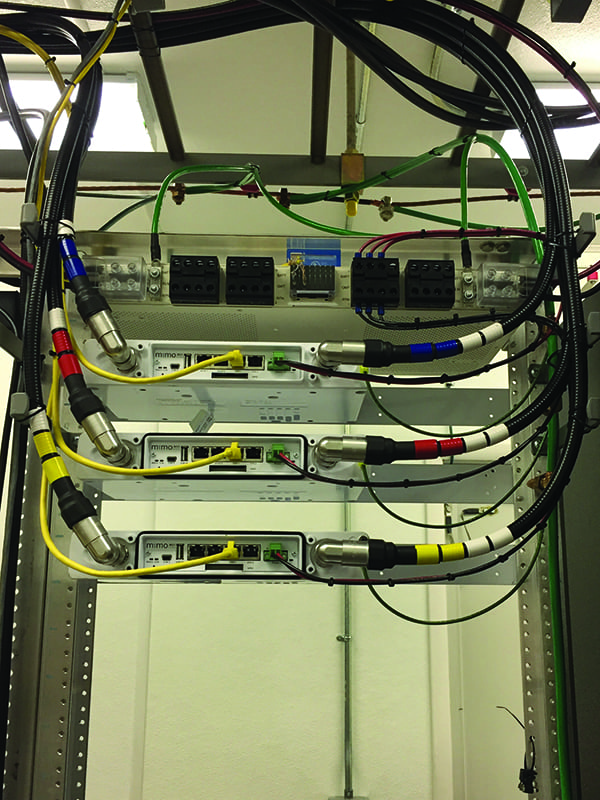Innovative Narrowband Solution for SCADA Communications
Great River Energy rolled out an extensive 700-MHz point-to-multipoint communications project within its 56,000-square-mile service area. Using high-order modulation, combined with full-duplex, multiple-input-multiple-output communications, the technology effectively doubles data capacity in narrowband channels to support supervisory control and data acquisition (SCADA) requirements across the network.
Commencing in 2018, Great River Energy of Maple Grove, Minnesota (Figure 1), is utilizing radios from MiMOMax Wireless to support supervisory control and data acquisition (SCADA) requirements across its network.
With 4,800 miles of transmission line, a further 92,000 miles of distribution line plus 563 distribution substations to manage, Great River Energy required a stable, resilient solution, which would underpin its critical infrastructure and provide visibility to the edge of the network. In addition, the solution needed to be cost-effective due to the size of the network involved, provide coverage across challenging terrain, and offer scalability to allow for future proofing as the network expands.
Maximizing Spectral Efficiency
Having leased two 1-MHz channels within the 700-MHz upper A block, the challenge for Great River Energy was to find a partner who could maximize their data throughput in this block of spectrum, thereby offering a greater return on investment. “The level of throughput offered to Great River Energy via our Tornado radios allowed them to effectively utilize the available 700-MHz spectrum in ways not possible with traditional radio communications. The design features of our radios allow us to offer the most spectrally efficient, narrowband linking solution in the licensed spectrum market,” said Paul Reid, general manager for North America, MiMOMax Wireless.
Using high-order modulation, 256 QAM (quadrature amplitude modulation), which is fairly unusual in narrowband channels, combined with full-duplex, multiple-input-multiple-output (MIMO) communications, the MiMOMax Wireless technology effectively doubles data capacity in narrowband channels. In addition, built-in equalizers monitor the channels and equalize any channel perturbations, thereby optimizing the link to provide better throughput in the channel.
“The key benefit of using this solution is essentially that more data can be passed through a small channel. The use of MIMO technology combined with high-order modulation means we will be able to transmit an impressive amount of data inside of a 50-kHz channel,” said Kathy Shaft, PE, senior telecommunications engineer at Great River Energy.
Incorporating full-duplex, 2 x 2 MIMO technology allows customers to undertake activities such as software updates while still monitoring equipment. With each channel maintaining its independence at all times within a MiMOMax network, there is no resulting impact on either channel. “Furthermore, we have incorporated adaptive modulation into our radios, from QPSK [quadrature phase shift keying] up to 256 QAM, so that all our links in a point-to-multipoint network can be maintained independently, improving overall reliability. For example, if a 256 QAM link is brought down to 64 QAM or QPSK due to conditions in the channel, other remote radios in the network will not be impacted and can maintain their own modulation at 256 QAM,” said Reid.
Facing the demands created by limited spectrum availability and differing data capacity and latency requirements across the network at different times, the ideal approach was to engineer a fit-for-purpose network. “Given the parameters Great River Energy were working within, it became clear that what was required for this project was a collaborative approach. Our engineers therefore worked closely with the Great River Energy engineers to design a solution which would provide the bandwidth and ubiquitous coverage they required across their network at a price that was sustainable,” said David Wade, managing director, MiMOMax Wireless.
Minimizing Interference
Confined between Verizon’s LTE system and FirstNet’s proposed public safety broadband network, the narrow slice of spectrum in the 700-MHz upper A block has specific low-noise requirements under Federal Communication Commission rules. The project therefore presented a challenge due to the prospect for out-of-band interference combined with the potential for self-interference. “Our current system uses three large channels, which does not allow us many options for frequency re-use, and as a result, we have faced a lot of challenges with self-interference. By using 50-kHz channels, we now have a much more robust frequency plan and expect our self-interference to greatly improve or even be eliminated altogether,” said Shaft.
“In addition to mitigating interference issues via our integrated band pass duplexers, our network design allows greater levels of frequency re-use, resulting in less self-interference along with minimal cross boundary and adjacent spectrum issues. Prior to deployment, we also completed detailed network coverage modeling to ensure that co-channel protection could be achieved via our proposed frequency re-use in conjunction with the high-gain directional antennas utilized at the subscriber ends of the network,” said John Wilkinson, network design manager, MiMOMax Wireless.
Radio frequency (RF) power has long been perceived as “king” when it comes to multipoint installations, but the team at MiMOMax feel that the network they have designed has dispelled that myth. “We have clearly demonstrated through our most recent deployments that it is less about RF power and is actually more about smart network design to optimize spectral efficiency and network performance. Combine that with the ability to mitigate cross-boundary or self-interference and you have a winning formula,” said Wade.
The radios from MiMOMax Wireless are also software configurable to operate at bandwidths of 12.5, 25, or 50 kHz and can use a mixture of channel bandwidths within a network (Figure 2). In addition to maximizing the data capacity in narrower channels, this ability to subdivide channels allows for a mix of paths with higher or lower data rates at various points across the network resulting in maximum customer flexibility.
The Drive Toward ‘Greener’ Energy
Recognizing that its owners (the 28 cooperatives it serves) desired more than just reliable wholesale power, in 2013, Great River Energy publicized the steps it intended to take toward a lower-carbon future. Meeting the demand for power, which had been generated in harmony with the company’s values around sustainability, efficiency, and environmental protection, Great River Energy continues to forge ahead as thought-leaders in the green energy space.
By 2017, Great River Energy had already met Minnesota’s target to achieve 25% renewable energy generation—eight years in advance of the target date—and it is on track to be generating nearly 30% of its energy via renewable resources such as wind and hydropower by 2021. Furthermore, the Dickinson Solar Project (the largest cooperative-installed solar array in Minnesota), which incorporates more than 8,300 panels, was the result of a collaborative effort between Wright-Hennepin Cooperative Electric Association and Great River Energy. This solar project, along with 19 smaller arrays and a 250-kW solar installation at the company’s headquarters (awarded Platinum Leadership in Energy and Environmental Design certification by the U.S. Green Building Council in 2009) are further examples of the utility’s focus on energy efficiency and sustainability.
Investing in Modernization
In addition to generating and buying more renewable energy, Great River Energy is also focused on modernizing its grid, with a goal of incorporating more “smart” technologies and achieving greater efficiencies on many levels. Through the use of automation and advanced metering, the utility will be better able to manage both the evolution of the grid and also the challenges and opportunities created by the integration of distributed energy resources (such as future bi-directional energy flows).
The first step required for this modernization, however, is the upgrade of critical telecommunications infrastructure that will serve the utility well into the future—the focus of this project with MiMOMax Wireless (Figure 3). “As more automation occurs across the grid, we expect to see a proliferation of devices requiring integration and monitoring, making the construction of a reliable, resilient communications network a necessity. Allowing for the timely delivery and analysis of data, a modernized grid will provide Great River Energy the ability to customize load control and achieve greater efficiencies,” said Reid.
Cost-Effective and Scalable
Given the size of Great River Energy’s service area, the cost-effectiveness of the total solution was a key consideration. The MiMOMax Wireless communications network not only provided ultra-spectral efficiency and engineered coverage but also offered hardware longevity. With base station hardware designed to run in excess of 15 years and remote radio units for 10 years without replacement, the solution provides an excellent return on investment.
“The reliability of our radios is ensured via the quality standards upheld during manufacturing at our ISO9001 accredited manufacturing facility. The expectation is that due to the quality engineering of the hardware, truck roll expenses for repairs or maintenance will be significantly reduced into the future,” said Reid.
Another aspect of the project, which will ultimately result in lower operational costs, is the comprehensive training plan MiMOMax Wireless designed and delivered for Great River Energy staff. Covering topics such as antenna installation, RF configuration, and multipoint digital linking, the aim with such training programs is to build an extensive in-house knowledge base. Backed up by MiMOMax’s Support team if required, it is expected that the technicians at Great River Energy will have the ability to monitor, diagnose, and troubleshoot across the network themselves.
As the deployment of the communications network continues through 2018, the teams involved are looking toward a future in which Great River Energy can meet the growing demand for greener energy and greater efficiency with ease. “To be part of a future-focused project like this—one with the potential to create tangible benefits to both Great River Energy and the communities it serves—has been highly gratifying for our team. As we head further into the Industrial Internet of Things, we can see that more of our customers will require a robust communications network to support their drive towards sustainability and modernization. We feel that we have designed a solution that clearly speaks to those requirements,” said Wade. ■
—Sonia Kennedy is communications coordinator with MiMOMax Wireless (www.mimomax.com).


